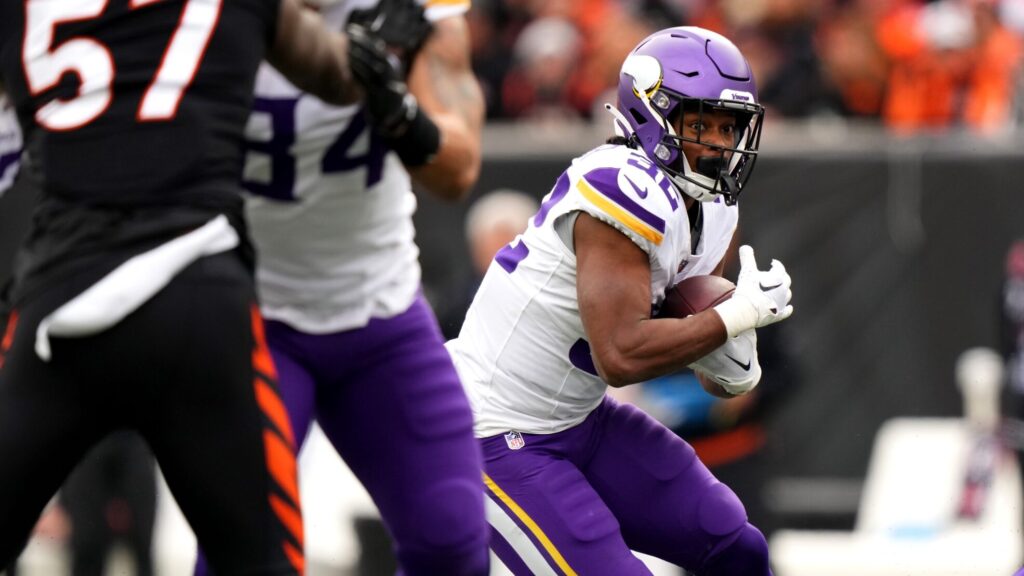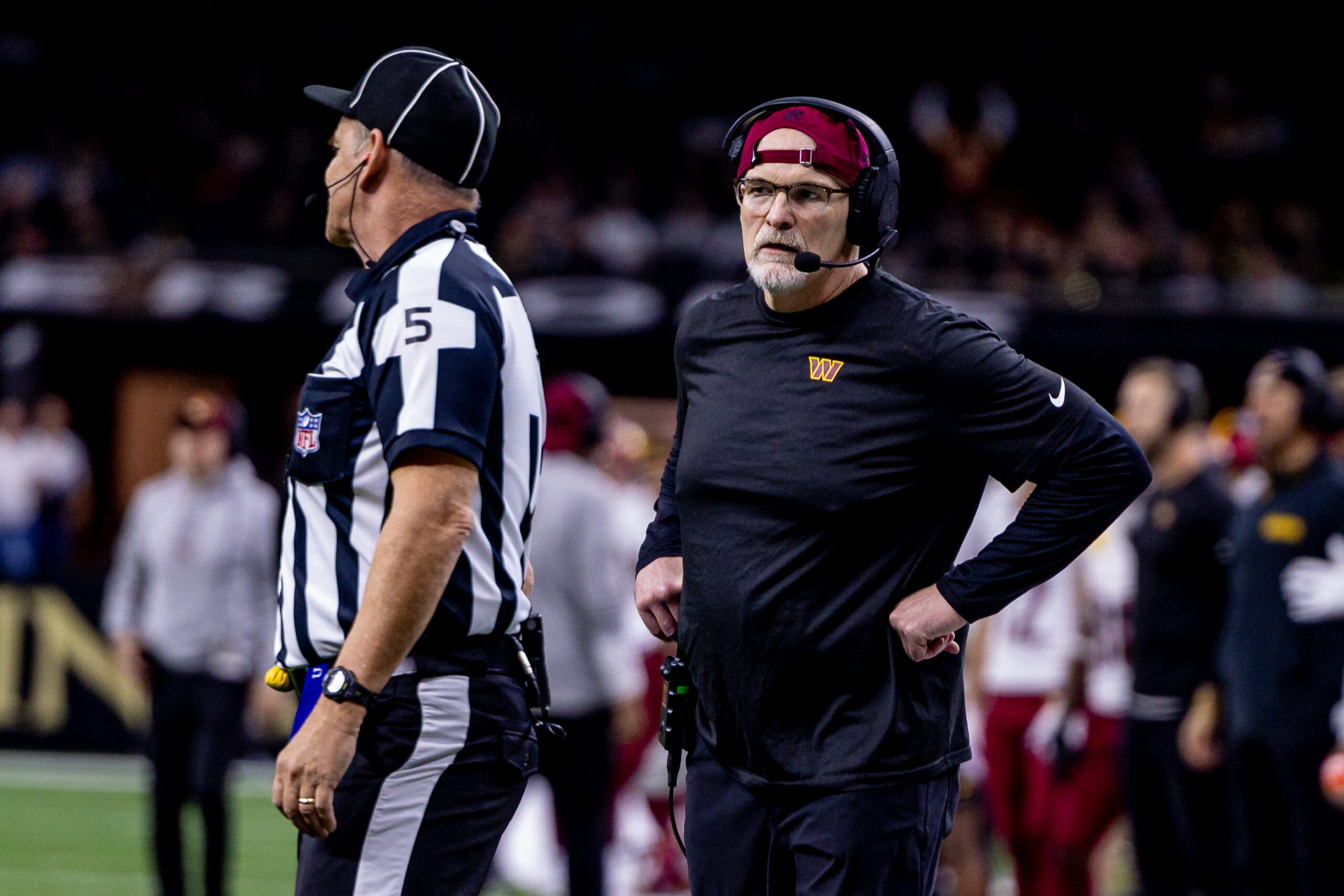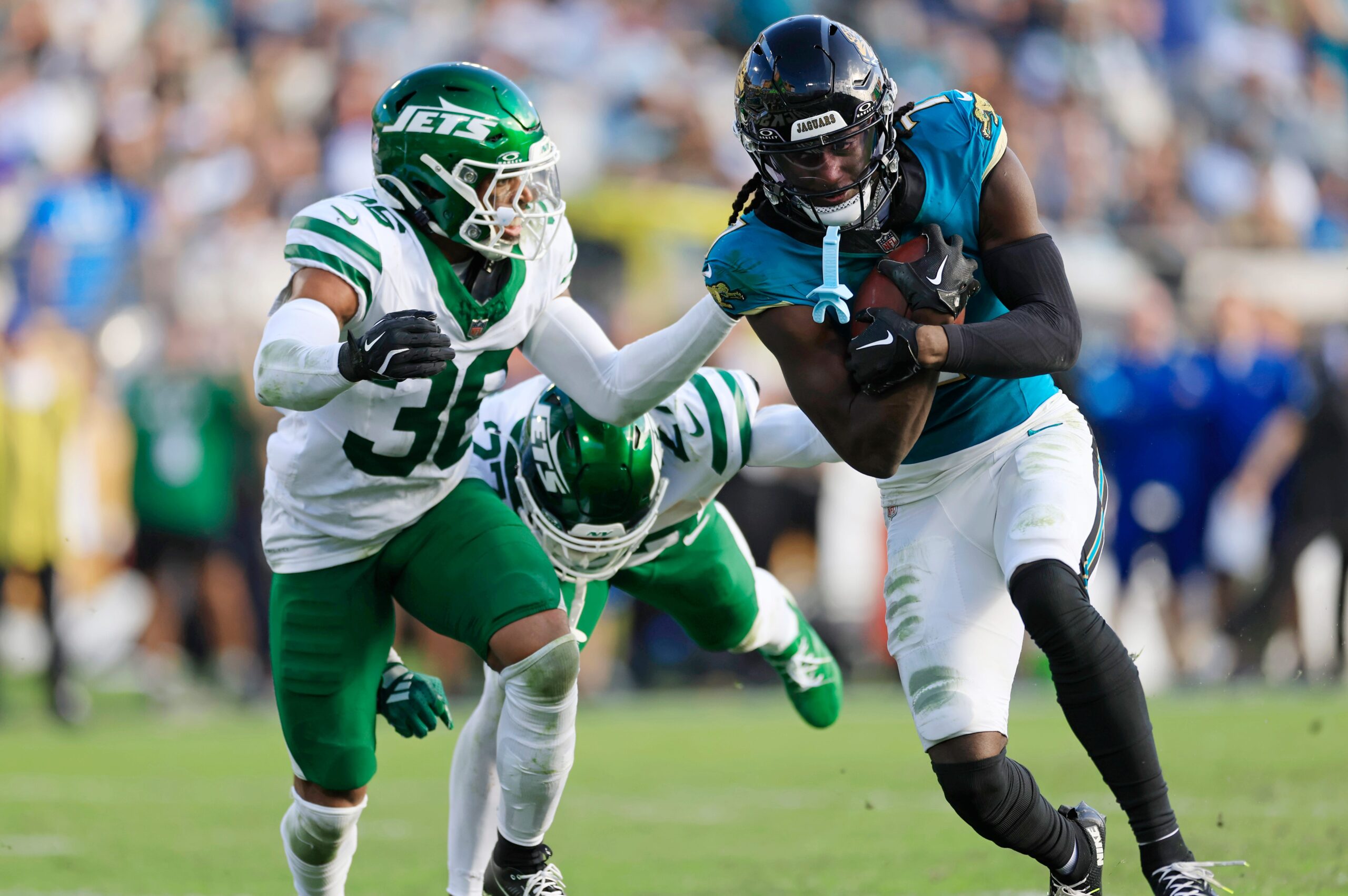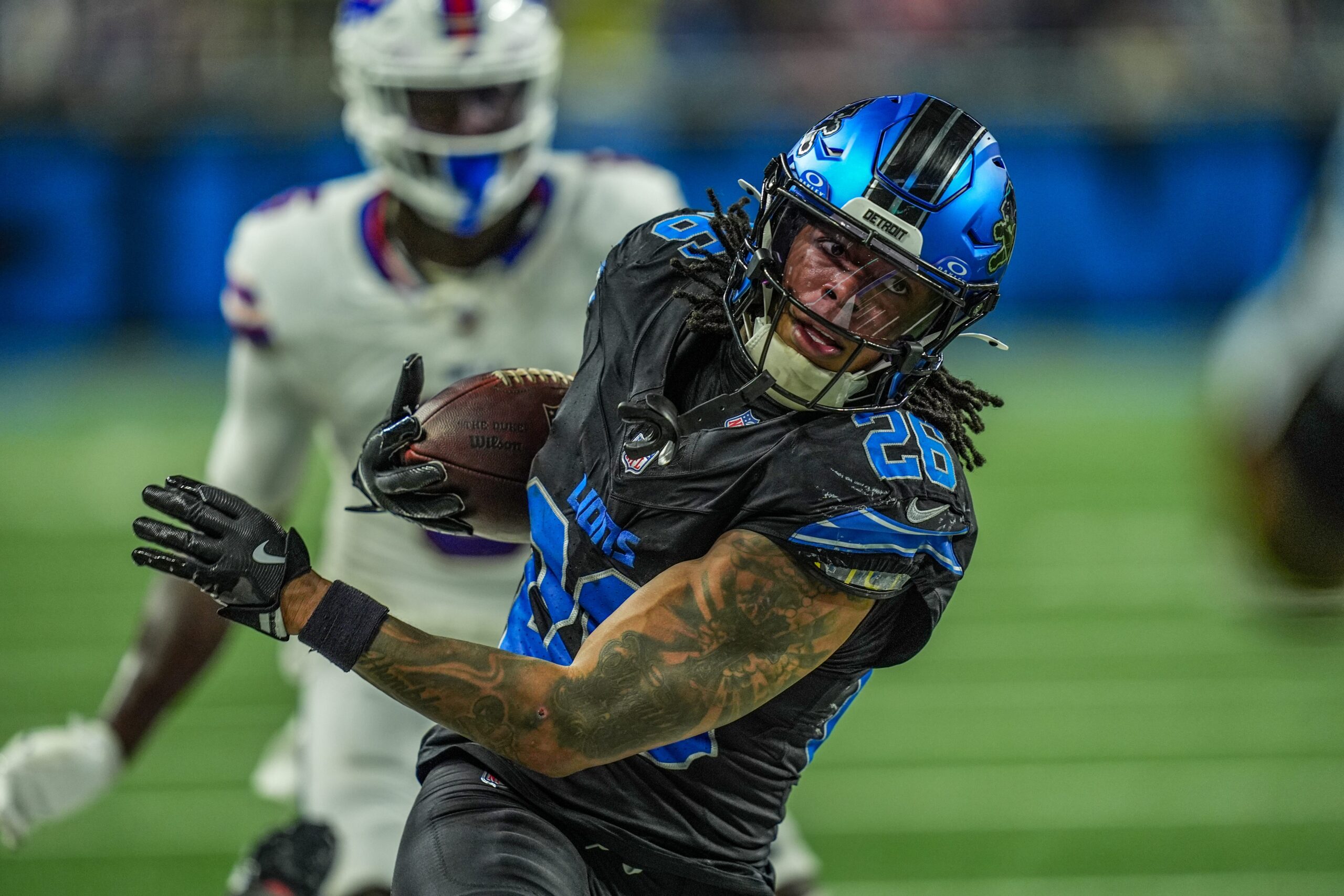Fantasy
12/23/23
7 min read
How To Handle Week 16 Chalk In DFS

It's common for DFS players to key in on the same expected top plays each week, or 'chalk plays' if you will. Each week, we'll look at the expected chalk plays with tips and best practices to improve your roster construction.
We’ll also explore theoretical and conceptual areas of roster construction in DFS as we examine various pieces of chalk throughout the season, with the goal to grow as players along the way. Numerous tips, or best practices, will emerge from this exploration. With that, and in our best Bruce Buffer voice, it’s time!
Week 16 Chalk
 New York Jets D/ST
New York Jets D/ST
The New York Jets are a solid, not great, on-paper play this week. Their defensive scheme does better at suppressing offensive production than creating disruptive opportunities (sacks and turnovers). Any defense expected to be among the highest-owned singular entities on a slate deserves fade/underweight consideration.
 Ty Chandler, Minnesota Vikings
Ty Chandler, Minnesota Vikings
Yes, Ty Chandler saw a robust workload a week ago against the Cincinnati Bengals, handling 27 running back opportunities in the overtime thriller. Three things – that game went to overtime, that was the first instance of a Minnesota running back eclipsing 100 yards on the ground this season and it was against a Bengals team allowing 4.7 yards per carry this season (second worst).
 Rachaad White, Tampa Bay Buccaneers
Rachaad White, Tampa Bay Buccaneers
Excuse my sense of hilarity with this situation. First, Rachaad White is the most expensive running back on the slate. Then, you’re telling me he will be one of the highest-owned backs on the slate, to boot? I don’t understand this one at all.
 Justin Jefferson, Minnesota Vikings
Justin Jefferson, Minnesota Vikings
I’m not sure why the field would consider Justin Jefferson a better objective play than, say, Tyreek Hill, Amon-Ra St. Brown, or CeeDee Lamb on this slate — all of whom are playing with their starting quarterback — while Jefferson is catching passes from the fourth starting quarterback utilized by the Vikings this season.
 Breece Hall, New York Jets
Breece Hall, New York Jets
Breece Hall is objectively a solid on-paper play this week. That said, I slightly prefer his teammate, Garrett Wilson, after the latter saw six of the first 12 Trevor Siemian passes directed his way last week (two were negated by penalty; the box score shows only four targets for Garrett Wilson after Zach Wilson didn’t target him in the first half and he was removed from the game late in a blowout).
 Trey McBride, Arizona Cardinals
Trey McBride, Arizona Cardinals
Trey McBride is an objectively solid on-paper play in the absence of Marquise Brown against a Chicago Bears defense that naturally filters production to opposing tight ends. The biggest theoretical dynamic involving McBride this week is the presence of five other tight ends that also carry an elite ceiling.
 DJ Moore, Chicago Bears
DJ Moore, Chicago Bears
DJ Moore has elite underlying metrics against man coverage this season but sees his target rate (19.9 percent), TPRR (15.5 percent), and air yards share against zone. This is important, considering the Arizona Cardinals are in the zone at the fourth-highest rate in the league this year.
 Justin Fields, Chicago Bears
Justin Fields, Chicago Bears
A similar discussion to the one above can be had for Justin Fields. Fields is at his best when he can remove the need to read and diagnose a defense – just go play ball. He now gets a matchup with the shallow Cover-2 shell of the Cardinals, which aims to force the exact things Fields struggles with.
What’s Most Important in Week 16
There are very few places of certainty on a slate riddled with games that carry wide ranges of potential outcomes. That said, we still have a couple of spots for team-based certainty and a few spots for individual certainty.
The Cleveland Browns have handed the keys to the offense over to Joe Flacco. The best part of that is that there were no strings attached, with the offense allowing Flacco to do Flacco things. That has translated to three consecutive games of a positive pass rate over expectation, with pass attempts values of 44, 45, and 44 over his previous three.
Even more interesting than that has been the extreme concentration of those looks. Amari Cooper left the first game early after seeing five targets. During the subsequent two games, 44 of 89 Flacco pass attempts have been directed at the combination of Cooper and tight end David Njoku, good for a tidy 49.4 percent combined team target market share.
On the other side of that same game, the Houston Texans take on a Cleveland defense allowing 30.7 points per game on the road this season and should have an offense highly concentrated among Devin Singletary (Dameon Pierce being phased out of the offense; Singletary has opportunity counts of 32, 24, 13 and 31 in the four games this season in which he has played 75 percent or more of the team’s offensive snaps), Nico Collins (questionable, calf) and Noah Brown. This game has all the makings of a fantasy gold mine, with concentration, scoring potential, and desperation factor (each team playing for its playoff lives) all present.
Like the discussion on Singletary, Chuba Hubbard has seen opportunity counts of 25, 25 and 24 in the three games since the team fired head coach Frank Reich, who was calling offensive plays for this franchise prior to his departure.
Those games came against the stout run defenses of the Tampa Bay Buccaneers, New Orleans Saints and Atlanta Falcons, with the veteran journeyman now graced with a trip to Lambeau to take on the sieve-like Green Bay Packers run defense. Those two backs offer a clear path to 50+ running back opportunities at a combined salary of just $11,200 on DraftKings and are in much better on-paper matchups than the chalky Chandler.
The final piece of certainty on this slate is a wide receiver aiming to set history, playing in the game with the highest game total on the slate, that is somehow coming in at sub-10 percent expected ownership (likely due to the relative lack of projectable value on this slate).
That man is Tyreek Hill. Ankle be damned, if he is on the field, I want him on my rosters. Hill gains increased importance on a slate where the score needed to ship GPPs will likely be down, increasing the importance of raw points in the process.
Building Leverage
The most interesting aspect of this slate is that we don’t have to do much to generate meaningful leverage, considering none of those “spots of certainty” are expected to garner prohibitive ownership levels. In other words, this is one of those rare slates where you can simply choose the best on-paper plays and watch as the field stumbles over itself.
The final thing I’ll note before we get out of here is the field’s relative disdain for playing multiple tight ends on a roster and for playing three running backs on a roster in the current NFL landscape. This is a unique slate in that the tight ends priced above $5,000 carry median projections and ceilings that are comparable to, or greater than, the wide receivers priced in the same area.
In other words, they are better on-paper plays than the wide receivers priced around them. We can generate meaningful leverage on this slate simply by thinking outside the box and straying from the inherent biases that the previous five seasons have invoked in our minds.
That will do it for our Week 16 exploration of chalk and some theoretical and conceptual takeaways. We’ll be running this series every week of the 2023 season, picking out new learning points with each week. I welcome all feedback with this new column, so please don’t hesitate to reach out to let me know things you like or things I could do better.
Follow The 33rd Team Podcast Network on Spotify and Apple Podcasts.








